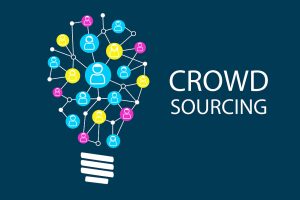
Harnessing the Collective Wisdom of the Crowd
Crowdsourcing in marketing is the practice of soliciting ideas, feedback, and content from a diverse group of individuals, often through online platforms and communities. This collaborative approach to problem-solving and ideation taps into the vast pool of knowledge, expertise, and creative potential that exists beyond the confines of a brand’s internal team.
One of the key advantages of harnessing the collective wisdom of the crowd is the ability to access a wide range of perspectives and experiences. By engaging with a diverse group of contributors, brands can gain insights that may not have been possible through traditional market research or internal brainstorming sessions. This diversity of thought can lead to the generation of innovative solutions and fresh marketing concepts that resonate with the target audience.
Moreover, the collaborative nature of crowdsourcing fosters a sense of shared ownership and investment among the participants. When individuals feel that their ideas and contributions are valued, they are more likely to become advocates for the brand, further amplifying the reach and impact of the marketing initiatives.
VIEW MY ADS – A Great Way to Advertise and Get Much Needed Customer Feedback
Advertisers Can…
- Post ads.
- Assign rewards values.
- Get valuable feedback on posted ads.
- Give back to their new customers.
You can put the data the app collects to work for your company and create loyal customers while you do it.
> Learn More
The Benefits of Crowdsourcing in Marketing
Embracing crowdsourcing in marketing offers a multitude of benefits that can significantly enhance the effectiveness and success of advertising campaigns. Let’s explore some of the key advantages:
Enhanced Creativity and Innovation
Tapping into the collective creativity of the crowd can lead to the development of unique and innovative marketing concepts that may not have been possible with a limited internal team. The diverse perspectives and creative talents of the contributors can result in the generation of fresh ideas and novel approaches that captivate the target audience.
Cost-Effectiveness
Crowdsourcing provides a cost-effective alternative to traditional marketing strategies, such as hiring specialized agencies or conducting extensive market research. By leveraging the crowd, brands can access a vast pool of talent and ideas at a fraction of the cost, allowing them to allocate resources more efficiently.
Rapid Idea Generation
The speed at which crowdsourcing can generate a large volume of ideas and solutions is another significant advantage. Brands can quickly gather a diverse range of concepts and proposals, enabling them to stay ahead of the competition and adapt to rapidly changing market trends.
Increased Engagement and Advocacy
Involving the crowd in marketing initiatives fosters a sense of engagement and ownership among the participants. When individuals feel that their ideas and contributions are valued, they are more likely to become brand advocates, sharing their experiences and spreading the word about the brand’s products or services.
Valuable Market Insights
Crowdsourcing allows brands to gain valuable insights into consumer preferences, trends, and behaviors. By engaging with the crowd, brands can gather real-time feedback and data, which can inform their marketing strategies and help them make more informed decisions.
Identifying and Defining Marketing Challenges
Before embarking on a crowdsourcing campaign, it is crucial for brands to clearly identify and define their marketing challenges. This step involves conducting a thorough analysis of the current marketing landscape, understanding the target audience, and aligning the marketing goals with the overall business objectives.
One effective tool for this process is a SWOT (Strengths, Weaknesses, Opportunities, Threats) analysis. By examining the internal and external factors that can impact the brand’s marketing success, companies can gain a comprehensive understanding of their marketing challenges and opportunities.
Additionally, setting SMART (Specific, Measurable, Achievable, Relevant, Time-bound) goals can help brands establish clear and realistic expectations for their marketing outcomes. Segmenting the target market and creating buyer personas can also provide valuable insights into the specific needs and preferences of the audience.
Crafting Effective Crowdsourcing Campaigns
When it comes to leveraging crowdsourcing for marketing success, the key lies in crafting effective and engaging campaigns. Here are some essential elements to consider:
Define Clear Objectives
Establishing clear objectives is the foundation of a successful crowdsourcing campaign. Brands should define what they hope to achieve, whether it’s generating new ideas, gathering feedback, or solving a specific marketing challenge.
Engage the Crowd
To encourage active participation, brands should provide incentives, such as rewards or recognition, and create a user-friendly platform where contributors can easily submit their ideas or feedback.
Foster Collaboration
Crowdsourcing is not just about collecting individual ideas; it’s also about fostering collaboration among the participants. Brands should encourage contributors to build upon each other’s ideas, provide feedback, and work together to refine and improve the concepts.
Embrace Diversity
Tapping into a diverse range of perspectives is one of the strengths of crowdsourcing. Brands should actively seek input from a wide variety of individuals, including customers, employees, industry experts, and the general public.
Provide Clear Guidelines
To ensure that contributors understand the scope and requirements of the campaign, brands should provide clear guidelines and instructions. This will help participants focus their efforts and submit ideas that are aligned with the brand’s marketing objectives.
Showcase Successful Examples
Highlighting successful crowdsourcing campaigns from other brands can inspire and guide the participants, helping them better understand the type of content or solutions the brand is seeking.
Engaging and Motivating the Crowd
Engaging and motivating the crowd to participate in a crowdsourcing campaign is crucial for its success. Brands can employ various strategies to foster active involvement and maximize the potential of the collective intelligence:
Create a Sense of Purpose
Establishing a clear and meaningful purpose for the crowdsourcing campaign can inspire participants to actively contribute. By aligning the campaign with a shared goal or cause, brands can tap into the intrinsic motivation of the crowd.
Incorporate Gamification and Incentives
Introducing gamification elements, such as challenges, rewards, and recognition, can make the participation experience more engaging and rewarding for the contributors. This can effectively incentivize the crowd to get involved and submit their best ideas.
Build a Supportive Community
Fostering a sense of community among the participants can enhance engagement and encourage collaboration. Brands should facilitate interaction, knowledge sharing, and mutual support to create a nurturing environment for the crowd.
Provide Feedback and Recognition
Regularly acknowledging and appreciating the contributions of the crowd is essential. Offering constructive feedback and publicly recognizing the efforts of the participants can boost motivation and encourage continued participation.
Leverage Social Proof
Highlighting success stories and showcasing the impact of the crowd’s contributions can inspire others to get involved. By demonstrating the positive outcomes achieved through collective efforts, brands can motivate more individuals to join the cause.
Analyzing and Leveraging Crowd Insights
By analyzing and leveraging the insights gathered from the crowd, brands can gain a deeper understanding of their target audience, generate innovative ideas, and validate their marketing strategies. Here are some key ways to capitalize on the collective wisdom of the crowd:
Understanding Consumer Behavior
Studying the actions, preferences, and feedback of the crowd can provide valuable insights into consumer behavior patterns. This information can then be used to tailor marketing strategies and campaigns to better resonate with the target audience.
Idea Generation
Crowdsourcing can be a powerful tool for generating innovative ideas. By soliciting input from a large and diverse group of individuals, brands can tap into a wide range of creative perspectives and unique solutions to their marketing challenges.
Feedback and Validation
The crowd can also provide valuable feedback and validation for marketing initiatives. By seeking input from the target audience or a representative sample, brands can gauge the effectiveness and appeal of their marketing strategies, identify areas for improvement, and ensure alignment with customer expectations.
Leveraging User-Generated Content
Encouraging customers to create and share content related to the brand or product can not only generate buzz but also provide authentic and relatable content that resonates with other potential customers. This user-generated content can be a powerful asset in a brand’s marketing arsenal.
Implementing Crowd-Sourced Solutions
Integrating crowd-sourced solutions into a brand’s marketing strategy can be a highly effective way to leverage the collective wisdom and creativity of the crowd. Here are some strategies for implementing these solutions:
Engage the Audience
Actively involving the audience in the decision-making process is a powerful approach. Brands can solicit feedback, ideas, and suggestions through surveys, polls, or open-ended questions, making the audience feel valued and invested in the brand’s success.
Collaborate with Influencers
Partnering with influencers or industry experts who have a large following can be an effective way to crowdsource ideas and solutions. By tapping into their networks, brands can gain valuable insights and content from their engaged audiences.
Gamify the Process
Incorporating gamification elements, such as contests or challenges, can incentivize participation and encourage the crowd to submit their best ideas. This can foster a sense of excitement and friendly competition, leading to a higher quantity and quality of contributions.
Overcoming Challenges in Crowdsourcing Marketing
While the benefits of crowdsourcing in marketing are substantial, there are also potential challenges and pitfalls that brands should be aware of and address:
Understanding the Crowd
Brands must have a deep understanding of the crowd they are engaging with, analyzing their demographics, preferences, and behaviors to tailor their marketing strategies accordingly.
Effective Communication
Clear and effective communication is crucial to ensure that participants understand the goals, expectations, and guidelines of the crowdsourcing campaign. Providing detailed instructions and examples can help eliminate confusion and improve the quality of the submissions.
Maintaining Quality Control
Implementing a robust review and feedback system is essential to maintain the quality of the crowd-sourced content or solutions. Regular monitoring and constructive feedback can help improve the overall output.
Offering Appropriate Incentives
Providing attractive incentives and rewards can effectively motivate the crowd to participate and submit high-quality contributions. Brands should carefully consider the appropriate types and levels of incentives to drive engagement.
Continuous Evaluation and Iteration
Crowdsourcing marketing is an iterative process, and brands should regularly evaluate the effectiveness of their campaigns and make necessary adjustments based on the feedback received. This allows for continuous optimization and improvement over time.
Real-Life Examples of Successful Crowdsourcing Marketing Campaigns
To illustrate the power of crowdsourcing in marketing, let’s explore some real-life examples of successful campaigns:
Innovative Product Development
A tech company sought to develop a groundbreaking product and turned to crowdsourcing to gather ideas and expertise from a diverse group of individuals. The collaborative approach resulted in the creation of a highly innovative and market-disrupting product.
Engaging User-Generated Content
A popular fashion brand encouraged its customers to submit photos showcasing their unique style and fashion sense. By incorporating user-generated content into their marketing strategy, the brand not only fostered a sense of community but also gained valuable insights into their target audience’s preferences and trends.
Problem-Solving and Idea Generation
A multinational corporation faced a complex business challenge and leveraged crowdsourcing to gather a wide range of innovative proposals. Through this collaborative effort, the company was able to identify a groundbreaking solution that significantly improved their business operations.
Social Impact Initiatives
A nonprofit organization launched a crowdsourcing campaign to address a pressing social issue. By engaging the crowd, they were able to gather diverse perspectives and ideas, leading to the development of impactful initiatives that positively impacted the lives of many.
These examples demonstrate the versatility and effectiveness of crowdsourcing in various marketing contexts, highlighting how brands can harness the collective intelligence and creativity of the crowd to drive successful campaigns and achieve their marketing objectives.
The power of crowdsourcing has emerged as a game-changing strategy for brands and advertisers. By tapping into the collective wisdom and creativity of the crowd, companies can unlock a wealth of benefits, including enhanced creativity, cost-effectiveness, rapid idea generation, increased engagement, and valuable market insights. As more brands embrace the advantages of crowdsourcing, the future of marketing is poised to be increasingly collaborative, innovative, and responsive to the needs and preferences of the target audience. By leveraging the crowd’s collective intelligence, advertisers can craft more impactful and successful marketing campaigns that resonate with their customers and drive meaningful business growth.
—
 Earn Rewards With ViewMyAds
Earn Rewards With ViewMyAds
A new and innovative app that rewards you for watching ads!
- Watch selected ads
- Rate and review what you watch
- Get rewarded for your time and opinion
Advertise with ViewMyAds
You can put the data we collect to provide valuable feedback for your company.
> Learn More
—

 Earn Rewards With ViewMyAds
Earn Rewards With ViewMyAds